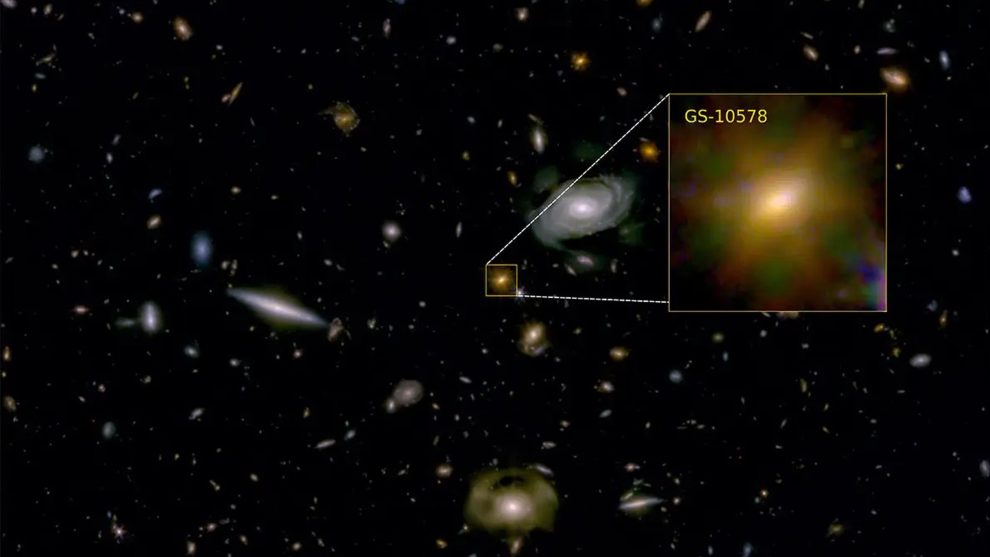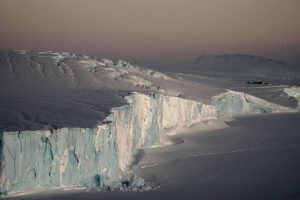A team of researchers has discovered the largest black hole known to date, located in the galaxy GS-10578, formed shortly after the Big Bang.
This colossal structure is depriving the galaxy of the ability to form new starswhich has led her to “die” prematurely.
The details of the findled by scientists from the Centre for Astrobiology and the University of Cambridge, shed light on galaxy formation and the destructive impact of these cosmic giants in the early universe.
A discovery that changes what we know about black holes
NASA / JWST / Francesco D`Eugenio
This black hole is located in a galaxy from the early universe, specifically in GS-10578, which It was formed approximately two billion years after the Big Bang.
Although supermassive black holes are known to inhabit the centre of many galaxies, this one in particular has surprised with its size and the speed with which it has prevented the creation of new stars in its surroundings. With a total mass comparable to that of the Milky Way, GS-10578 presents atypical characteristics for its era.
Thanks to advanced observations made with the James Webb Space Telescope (JWST), astronomers They have managed to observe that the black hole is expelling enormous amounts of gas at extremely high speeds.
These galactic winds are depriving the galaxy of the resources needed to create new stars, making this one of the first direct evidence of how black holes can affect galactic evolution.
The galaxy GS-10578: a giant in the early universe
Nicknamed the “Pablo Galaxy,” GS-10578 has been a subject of study for years due to its unusual size for the time in which it formed. With a size similar to that of the Milky Way, this galaxy challenges previous theories that indicated that galaxies in the early universe were smaller and less structured.
The team of astronomers, led by Pablo G. Pérez-González of the Center for Astrobiology (CAB), had identified this galaxy as a “blue nugget”an evolutionary stage in which a large number of stars form rapidly in a small volume and with high density.
However, when they studied the galaxy more closely with Webb, they noticed that something was preventing new stars from forming. That “force” turned out to be the supermassive black hole.
This black hole is not only present in the center of the galaxy, but It is also “killing” it by cutting off the flow of gas and dust. that stars need to form.
Researcher Francesco D’Eugenio, from the Kavli Institute for Cosmology in Cambridge, explains that this massive ejection of gas by the black hole has almost completely stopped star formation in GS-10578.
This phenomenon is not completely unknown to astronomers, but the case of GS-10578 It is one of the first where the process has been observed so clearly..
Before the James Webb Telescope, theoretical models suggested that black holes could halt star formation in galaxies, but it had never been possible to see this interaction in such detail.
The discovery of this giant black hole not only provides new insights into GS-10578, but also offers clues about how galaxies evolve in the universe. Galaxies, it seems, not only grow and form from the accumulation of gas and dust, but can also be affected, or even destroyed, by the black holes that live at their centers.
Meet How we work in ComputerHoy.
Tags: POT





![[Img #73911]](https://thelatestnews.world/wp-content/uploads/2024/09/Europa-Clipper-ready-to-depart-Earth-to-search-for-signs-150x150.jpg)







![[Img #73911]](https://thelatestnews.world/wp-content/uploads/2024/09/Europa-Clipper-ready-to-depart-Earth-to-search-for-signs-300x200.jpg)


Add Comment